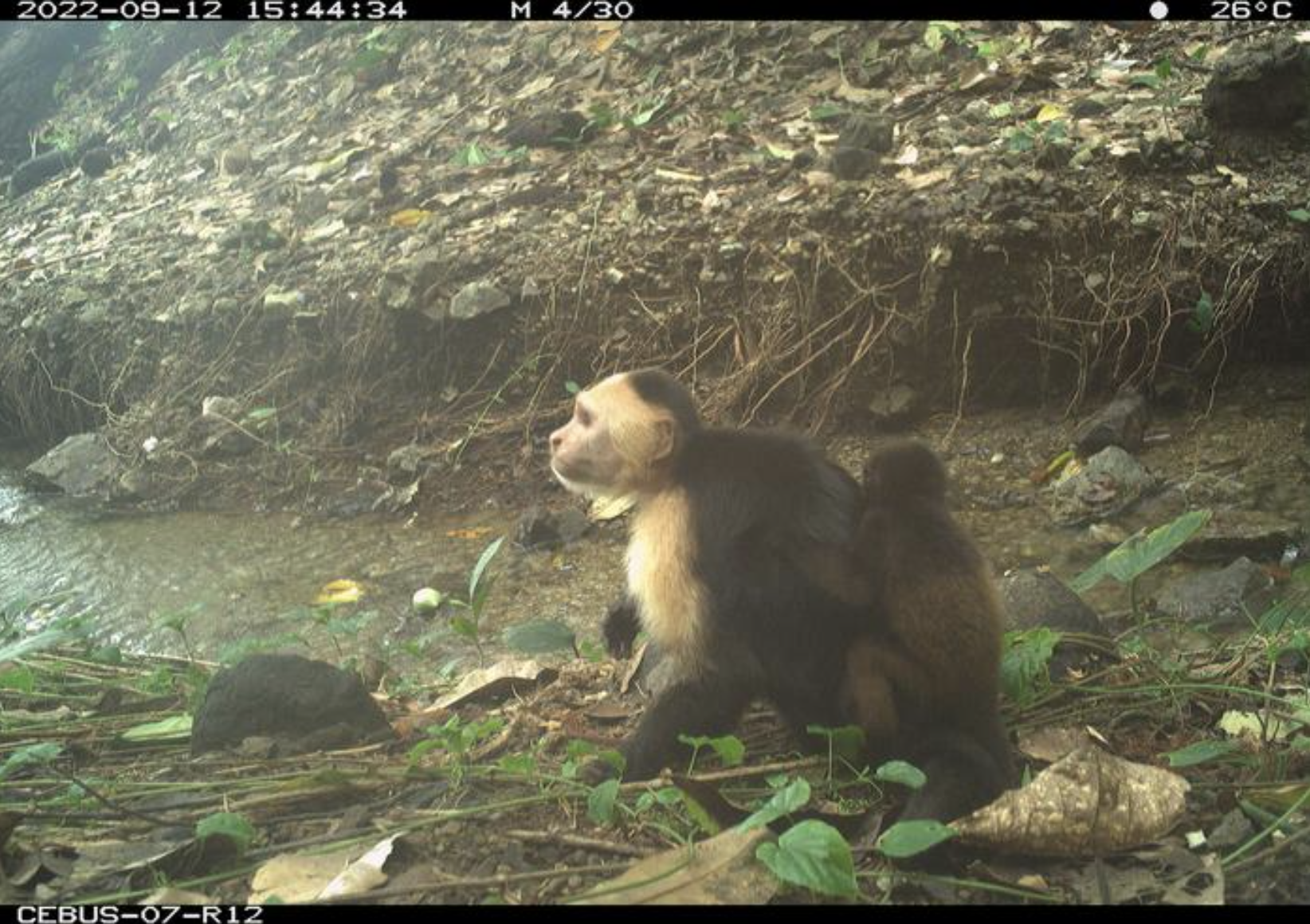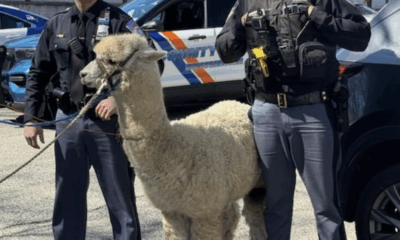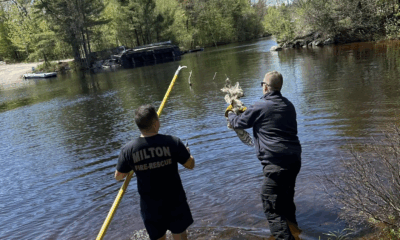Researchers say they found a group of white-faced capuchin monkeys on a remote island off Panama exhibiting a strange and disturbing behavior: abducting baby howler monkeys.
What started as a seemingly isolated behavior from a subadult male dubbed “Joker” on Jicarón Island in Coiba National Park has now evolved into a pattern researchers describe as a cultural fad — one with deadly consequences for the infant howlers. The finds were published this week in Current Biology.
Scientists have monitored the local capuchin population since 2017, documenting their well-known use of stone tools through an extensive network of motion-triggered cameras. But in 2022, doctoral researcher Zoë Goldsborough spotted something entirely new in the footage: a capuchin male carrying an infant howler monkey on his back.
“It was so weird that I went straight to my advisors office to ask him what it was,” said Goldsborough, who is conducting her dissertation at the Max Planck Institute of Animal Behavior (MPI-AB). The team had never seen such behavior in five years of surveillance. Initial theories included adoption, a behavior rarely seen and almost always performed by female animals.
“We had all the footage from cameras on Jicarón for the whole year,” said Brendan Barrett, a group leader at MPI-AB and Goldsboroughs advisor, “so we could reconstruct the scene to see if this weird behavior was just a one-off, or something bigger.”
Tens of thousands of images and videos revealed four different howler infants being carried, and in nearly all cases, they were being carried by Joker.
“Wed decided that it was one individual trying something new,” says Barrett, “which is not uncommon to see among capuchins. These are deeply curious animals who are constantly exploring the forest and figuring out how they can interact with their world.”
But later footage revealed that at least four other capuchins — also young males — had begun the same behavior. Over the course of 15 months, five male capuchins carried 11 different howler monkey infants for periods of up to nine days. The capuchins went about their normal business with the infants clinging to their backs or bellies.
“The complete timeline tells us a fascinating story of one individual who started a random behavior, which was taken up with increasing speed by other young males,” says Barrett. Researchers compared the cultural fad to trends among killer whales donning “salmon hats” or chimpanzees wearing a blade of grass in their ears like jewelry.
The howler infants were all less than four weeks old, and their parents were observed calling for the babies from trees. Four were observed to have died, and researchers suspect all the kidnapped howler infants ultimately died.
“The capuchins didnt hurt the babies,” said Goldsborough, “but they couldnt provide the milk that infants need to survive.”
Researchers say the capuchin fad marks the first documented case of a social tradition in which animals repeatedly abduct infants of another species with no clear benefit to themselves. The male capuchins did not eat the howler infants, or play with them, and they didn’t receive any special attention from other capuchins while carrying them.
“We dont see any clear benefit to the capuchins,” says Goldsborough “but we also dont see any clear costs, although it might make tool use a little trickier.”
Researchers speculate that boredom may be a factor. On predator-free Jicarón, capuchins face few survival pressures, which may create space for experimentation and unusual social behaviors.
“Survival appears easy on Jicarón. There are no predators and few competitors, which gives capuchins lots of time and little to do,” said Meg Crofoot, managing director at MPI-AB. “It seems this luxurious life set the scene for these social animals to be innovators. This new tradition shows us that necessity need not be the mother of invention. For a highly intelligent monkey living in a safe, perhaps even under-stimulating environment, boredom and free time might be sufficient.”
The discovery also raises conservation concerns. Howler monkeys are an endangered species on Jicarón, and the spread of this behavior could pose a threat if it continues unchecked. While the data collection ended in July 2023, the team has not yet analyzed the full dataset to determine whether the trend has persisted or expanded.
“Witnessing the spread of this behavior had a profound effect on all of us,” said Crofoot. “We therefore feel even more responsible to keep learning from this natural population of primates who, to our knowledge, are the only ones on earth to be practicing this strange tradition.”

 Celebrity News1 week ago
Celebrity News1 week ago
 Celebrity News1 week ago
Celebrity News1 week ago
 Celebrity News1 week ago
Celebrity News1 week ago
 Celebrity News1 week ago
Celebrity News1 week ago
 Celebrity News1 week ago
Celebrity News1 week ago
 Celebrity News1 week ago
Celebrity News1 week ago
 Celebrity News1 week ago
Celebrity News1 week ago
 Celebrity News1 week ago
Celebrity News1 week ago
 Celebrity News1 week ago
Celebrity News1 week ago
 Celebrity News1 week ago
Celebrity News1 week ago
 Celebrity News6 days ago
Celebrity News6 days ago
 News1 week ago
News1 week ago












